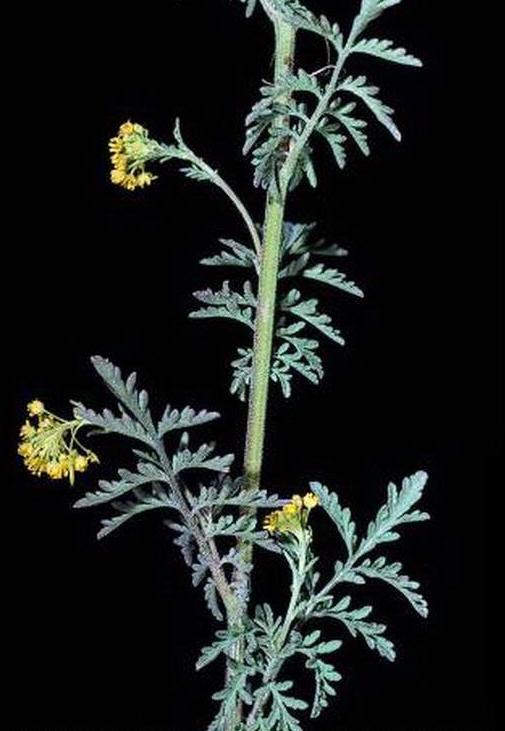
Yet to be spotted this year Dry-loving Western Tansy Mustard.
It’s the wild salad time of year here. During our classes this past weekend we harvested peppergrass, West Indian chickweed, false hawk’s beard, sow thistle, cucumber weed, Wild Mustard and various sorrels. These same plants can be fermented into a sauerkaraut, which enhances the vitamin C and provides probiotics. The three of the common greens of the season we did not see are Henbit, real Chickweed and western Tansy Mustard.
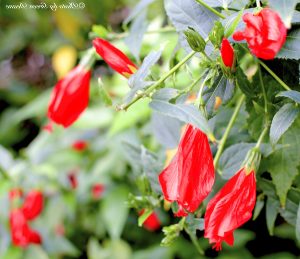
Malvaviscus pendiflorus. Photo by Green Deane
We saw several species blooming plants this past weekend including the “Sleepy Hibiscus.” It’s a fairly easy shrub to identify because the bright red blossoms never unfurl. Also blossoming was the Bauhinia. It’s a tree that is both easy and challenging at the same time. The blossoms are edible, look nice in salads. Some of the species have edible seeds and some do not. (They are in the pea family and most pea trees — most not all — do not have edible seeds.) Sorting out which Bauhinia you have can be a challenge, nearly as bad as sorting out which Cereus you have. Like the Cereus cactus there are several man-made hybrids and perhaps even some fake botanical names. It can make species identification a real headache though as far as I know all the blossoms are edible. Only “discovered” 111 years ago the blossom of the Bauhinia blakeana is the emblem of Hong Kong. You can read about the Bauhinia here.
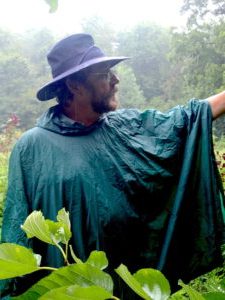
Classes are held rain or shine (but not during hurricanes.)
Because of the holidays there is only one foraging class this week, my annual Urban Crawl which is this Friday, and starts at 10 .m. not the usual 9 a.m. This is the 12th time I’ve had this holiday event. There is no charge and most of the walk is handicap friendly.
December 23rd: 12th Annual Urban Crawl, Winter Park 10 a.m. Meet in front of Panera’s, 329 park avenue There is a free parking garage behind (west of) Panera. If you park on the streets you are likely to get a ticket as there is a two-hour time limit.
Saturday December 31st Blanchard Park, 2451 N Dean RD Orlando, FL 32817. Meet at the pavilion next to the tennis courts.
Saturday January 7th Mead Garden: 1500 S. Denning Dr., Winter Park, FL 32789. Meet at the bathrooms. 9 a.m
Sunday January 8th, Wickham Park: 2500 Parkway Drive, Melbourne, FL 32935-2335. Meet at the “dog park” inside the park. 9 a.m.
Saturday January 15th the Princess Place Preserve, 2500 Princess Place Rd, Palm Coast, FL 32137, 9 a.m. Meet at the parking lot.
For more information, to pre-pay or sign up go here.
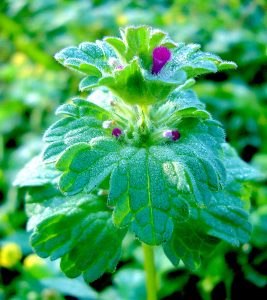
Henbit, one of the few “sweet” springtime greens. Photo by Green Deane
Yet to be seen this season is Henbit. It’s in the mint family but does not smell or taste minty. It does, however, have a square stem and the blossoms resembles mints. In northern climates it is one of the first green plants to pop up after the snow goes (it and chickweed.) Locally Henbit likes our cooler months of the year. It was esteemed by the natives because among all the annual greens it is not spicy but rather mild if not on the sweet side. What can be confusing about it is that the leave shape and stem length is different from young to old leaves. But they all have a scalloped shape. It also has a similar looking relative that is also edible called Dead Nettle. You can read about Henbit here.
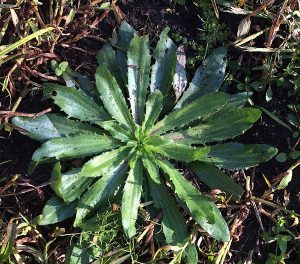
Our native plantago, Dwarf Plantain. Photo by Green Deane.
There are Plantains that look like tough bananas and there are Plantains that are low and leafy plants. They are not related. Just two different groups with the same common name. Low-growing Plantains can be native or non-native. The one pictured right is native, the Dwarf Plantain. As a genus the plants are well-known. The leaves are edible raw when young. As they age they become more bitter and stringy. Cooking makes them palatable up to a point. Then they move into the astringent medical realm. As such they are used on bites, stings and to help puncture wounds heal. The seeds are edible once produced and are the source of the commercial dietary fiber, psyllium. When finely ground the seeds are sold under the brand name Metamucil. There are numerous species of Plantagos (Plantains) with at least five common locally, P. virginiana, P. major, P. lanceolata and P. rugelii the latter which strongly resembles P. major. They are all used the same way. (P. rugelii is pink at the base of the stem.) One problem beginning foragers have is confusing young Oakleaf Fleabane leaves for Dwarf Plantain leaves (they are both rosette-ish, low-growing green leaves, hairy with fibrous threads in the stem.) But the Dwarf Plantain is essentially a long skinny hairy leaf with a few teeth. The Oakleaf Fleabane is much fatter, has lobes, and does resemble oak leaves found on more northern species. You can read about the Plantains here and I have a video here.
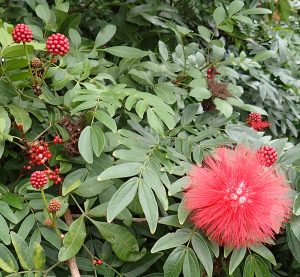
Calliandra haematocephala, the red powder puff. Photo by Green Deane
A toxic powder puff shrub we see this time of year is a native of Malaysia. It’s a small tree that was in the pea family but has been moved to the Mimosa group. It is not edible in any way. It’s just pretty, which has its own value. The name is slightly interesting in that it is all Living Greek mangled by new Dead Latin. Calliandra is a combination of Kallos (beautiful) and Andros (man) but is to mean — when poetically translated — “pretty stamen” (the male part of the flower which creates the powder puff.) Haematocephala means “blood head” or in this case “red head.” Thus pretty stamen red head. You could even stretch it to “pretty redheaded man.” The common name is Red Powder Puff.

You get the USB, not the key.
My nine-DVD set of 135 videos has been phased out and replaced by 171-videos on a 128-GB USB, see right. The USB videos are the same videos I have on You Tube. Some people like to have their own copy especially if social order falters. The USB videos have to be copied to your computer to play. If you want to order the USB go to the DVD/USB order button on the top right of this page or click here. That will take you to an order form. Or you can make a $99 donation, which tells me it is for the USB (include a snail-mail address.) I’d like to thank all of you who ordered the DVD set over the years which required me to burn over 5,000 DVDs individually. I had to stop making them as few programs now will read the ISO files to copy them. Burning a set also took about three hours.

Green Deane Forum
Want to identify a plant? Perhaps you’re looking for a foraging reference? You might have a UFO, an Unidentified Flowering Object, you want identified. On the Green Deane Forum we — including Green Deane and others from around the world — chat about foraging all year. And it’s not just about warm-weather plants or just North American flora. Many nations share common weeds so there’s a lot to talk about. There’s also more than weeds. The reference section has information for foraging around the world. There are also articles on food preservation, and forgotten skills from making bows to fermenting food. Recent topics include: Stale Bread and Cod Liver Oil, Killing Bugs with Tobacco Plugs, Eating weeds: Is it safe? Have they mutated? Not the Eastern Red Bug but the Pink Tabebuia, African Tulip Tree, Asparagus densiflorus, Green Deane’s Book… You can join the forum by clicking on the button on the upper right hand side of this page.
This is my weekly newsletter #536. If you want to subscribe to this free newsletter you can find the sign-up form in the menu at the top of the page. My website, EatTheWeeds.com, which is data secure, has over 1500 plants on it in some 428 articles. I wrote every one myself, no cut and paste.
To donate to the Green Deane Newsletter click here.

